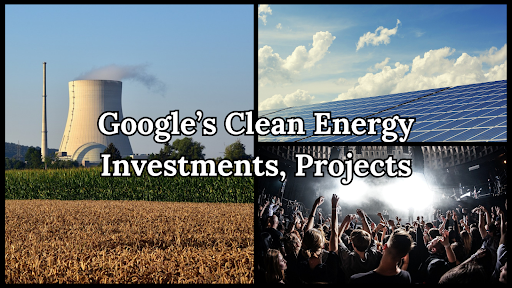Founded in 1998 by Larry Page and Sergey Brin from a small garage in California, Google now operates on six continents and more than 200 cities. A pioneer at the forefront of internet-driven innovation, the company has also strived to be an industry leader in a different sector: sustainability. A decade after achieving carbon neutrality in 2007, the internet company began matching all of its annual electricity consumption with 100% renewable energy.
It then set and worked toward an even more ambitious target: reaching zero lifetime net-carbon emissions. Google accomplished it by purchasing an amount of carbon offsets equivalent to the emissions produced from its launch to when it reached carbon neutrality in 2020.
The company then announced another goal (sensing a theme here?): running all business operations on carbon-free energy by 2030.
What exactly does that entail? Sundar Pichai, the chief executive officer of Google and its parent company Alphabet Inc. since 2015, described it as a “sustainability moonshot.”
“We’ll start by working towards 24/7 carbon-free energy at all of our data centers and campuses around the world. Our data centers power the products and services you’ve come to rely on every day,” Pichai said in a press release. “This will mean every email you send through Gmail, every question you ask Google Search, every YouTube video you watch, and every route you take using Google Maps is supplied by clean energy every hour of every day.”
It’s approximately the halfway point between Google’s announcement and the 2030 deadline, so keep reading to learn about a few of the tech giant’s investments and partnerships centered around renewable energy and sustainability.
A U.S. Solar Plant

Photo Courtesy andreas160578
Large-scale clean energy solutions developer energyRe announced that it signed a 12-year power purchase agreement (PPA) with Google in early October 2024. Founded in 2020, the plan will see the renewable energy firm develop, own, and operate a direct current (DC) solar project.
Once operational, the solar plant will supply 435-megawatt (MW) of renewable energy to Google’s operations in the central U.S. According to energyRE, it will generate enough electricity and Renewable Energy Credits (RECs) to power the approximate equivalent of 56,000 homes.
Nuclear Clean Energy

Photo Courtesy Leopictures
Only a few weeks after that announcement, Google signed the world’s first corporate agreement to purchase nuclear (clean) energy from a few small modular reactors (SMR). The SMRs, advanced nuclear reactors capable of producing lots of low-carbon electricity, will be developed by Kairos Power. The generators are smaller than traditional nuclear power reactors, factory-assembled, and easily installed.
Founded in California in 2016, Kairos Power aims to have the first of the project’s SMRs online by 2030, finishing the rest of the developments by the end of 2035. In total, the agreement will provide an estimated 500 MW of carbon-free electricity to the U.S.
Bad Guy Good Google

Photo Courtesy shbs
Billie Eilish has reached global stardom as a singer — she’s the youngest multi-time Oscar recipient in history. Not stopping there, Eilish recently announced an innovative sustainable partnership with Google Maps ahead of her upcoming tour, “Hit Me Hard And Soft: The Tour.” Google Maps will display a list of plant-based restaurants selected by Eilish in cities the tour will visit, including Atlanta, Chicago, Los Angeles, New York, and Washington, D.C.
Additionally, the tech company will automatically suggest walking or public transportation options in the tour cities (if similar to driving times) and incentivize lower fuel consumption routes with its leaf icon option. According to Google Maps, that energy-efficient routing icon is estimated to have cut more than 2.9 million greenhouse gas emissions from late 2021 to the end of 2023 alone.
What’s the Impact?
It goes without saying (but is still worth noting) that Google creates a lot of carbon emissions and other types of pollution. It’s one of the largest tech companies in the world, and every individual Google search requires a little bit of energy. Factor in that there are more than 1 billion Google users worldwide, and that little bit of energy becomes humungous.
Spoiler: Google’s partnership with Billie Eilish isn’t going to offset the growing (and alarming) rate of carbon emissions produced by artificial intelligence, but neither will any one effort! No single partnership, PPA, or investment will ever or can ever accomplish that much alone. It will take billions of people, millions of initiatives, and countless companies to achieve, and that’s why it’s worth celebrating the seemingly “smaller” sustainable wins.





